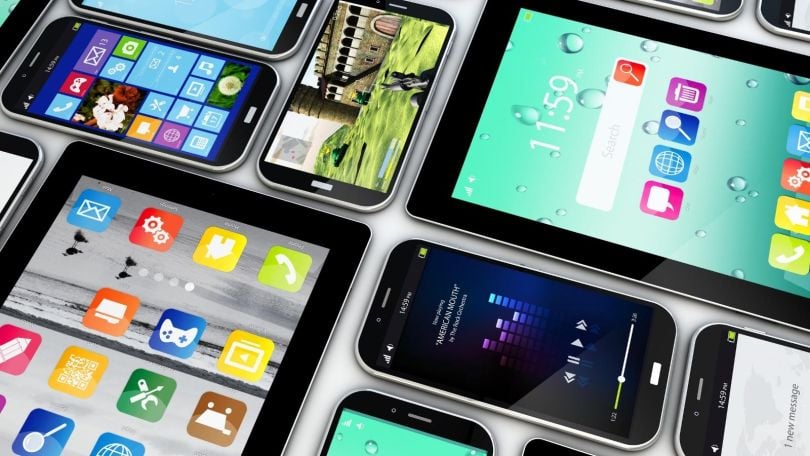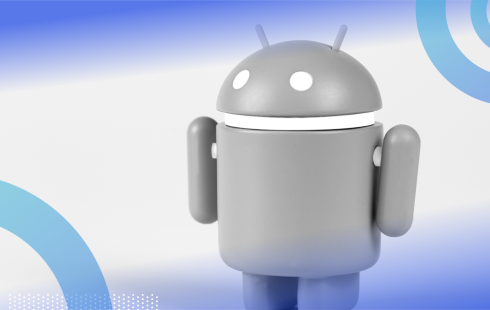20 Top 5G Companies Leading Mobile Connection

Mobile technology consists of any portable two-way computing device and the communication networks that connect them. Businesses often rely on mobile devices to share files and data, while individual consumers may use the technology to watch movies and scroll social media feeds. Regardless of the context, mobile technology enables people to complete tasks from any location, adding more flexibility to tech users’ everyday lives.

Mobile technology is a category consisting of a wide range of devices, with new two-way technology being created each day with unique uses. Regardless of form factor, all of these are linked by their capability to send and receive signals by communicating with other devices on networks.
For a mobile tech device to connect to other devices or use the internet, it must have access to a network that allows it to transmit a signal. Though mobile technology is often exemplified by physical devices, networks and their infrastructure can also be considered mobile technology. Each network is unique in its functionality.
Mobile devices are everywhere, and they’re not just limited to the phones in our pockets. Whether it’s distributing a stronger WiFi signal or enabling a user to access phone calls from their wrist, mobile devices come in all shapes, sizes and functionalities. Some of the most popular forms of mobile technology include:
Mobile technology offers many benefits for those using it in everyday life. It also opens up many possibilities for businesses operating with an agile and forward-thinking mindset. Through the use of mobile tech combined with SaaS platforms and cloud-based infrastructure for remote data access, these enterprises are able to streamline processes while reducing costs and maintaining productivity across the entire workforce.
Enterprise mobile technology reduces the costs associated with the constant device and infrastructure replacement cycle while also allowing powerful devices to be utilized in a portable fashion. This eliminates the need for employees to access multiple workstations and centralizes all data and communications to a single device.
Mobile technology can significantly improve the onboarding process for both employees and companies by centralizing all data and information to a single device. This gives new employees the ability to access everything they’ll need to become a productive part of the team while also allowing them to utilize their choice of technology. Mobile technology also makes onboarding customers simpler for similar reasons and takes much of the frustration out of the process.
A workforce that operates through the cloud and mobile technology means development can take place anywhere. This opens the door for forming a diverse global workforce, each bringing unique viewpoints and work schedules to businesses so growth can continue uninterrupted.
Powerful computing devices are expensive, especially when it comes to ensuring the entire enterprise has the tools it needs to operate properly. Mobile technology devices make it easier to clear data and pass outgoing equipment onto incoming employees. This also streamlines the device management process and maintains security across the organization.
Edge computing allows mobile devices and IoT technologies to process data from within or through a local server, boosting productivity through a distributed IT infrastructure.
Mobile devices offer many enterprise business applications, but they also pose new challenges if not managed properly. The line between personal and business data can become blurred when migrating to a mobile-first enterprise, especially when devices are employee-owned or travel between home and the office. This creates the potential for data breaches and compromises the intellectual property of both the individual and the business. However, security challenges can often be overcome by utilizing Enterprise Mobility Management techniques and platforms.
Enterprise Mobility Management (EMM) combines Mobile Device Management and Mobile Application Management tools into a single platform, providing IT and network professionals with complete visibility over the security of the entire enterprise. EMM platforms are designed to keep security as the top priority and often feature alerting and reporting capabilities to locate and mitigate security threats promptly.
What to look for in Enterprise Mobility Management software:
Mobile technology continues to evolve as people embrace some of the latest trends for applying tech to their daily lives. From businesses to individuals, consumers are looking for faster and more convenient ways to explore properties, analyze health data and participate in online games, among other activities. A suite of new technologies has answered the call, hinting at a future full of possibilities for the mobile technology sector.
Augmented reality (AR) and virtual reality (VR) have become entrenched in various industries, including the gaming world. For example, the Pokémon GO game comes equipped with an AR+ mode that more closely ties characters to real-world settings. However, this technology also streamlines workflows within many professional sectors:
Wearables have become a widespread technology, winning over both casual users and professionals. Apple watches, Fitbits and Garmin watches are examples of smart watches that collect data during physical activity. This ability has transformed wearables into crucial health devices that doctors can distribute to patients to monitor their conditions. Some also consider certain VR and AR devices to be part of the wearables category. While VR glasses help students learn through more interactive experiences, smart glasses allow logistics workers to review and update a database while traveling through a warehouse.
Combining the Internet of Things (IoT) and mobile applications, mobile IoT apps gather and share data across portable devices. Within a more personal context, an IoT-powered smoke detector can send alerts to a homeowner’s phone. This principle can be applied on a larger scale, such as a traffic system gathering traffic data and sending updates to the phones of any customer who signs up for the service. From workers in high-risk environments to consumers in their homes, a range of situations become much easier to navigate as app development companies perfect their mobile IoT applications.
